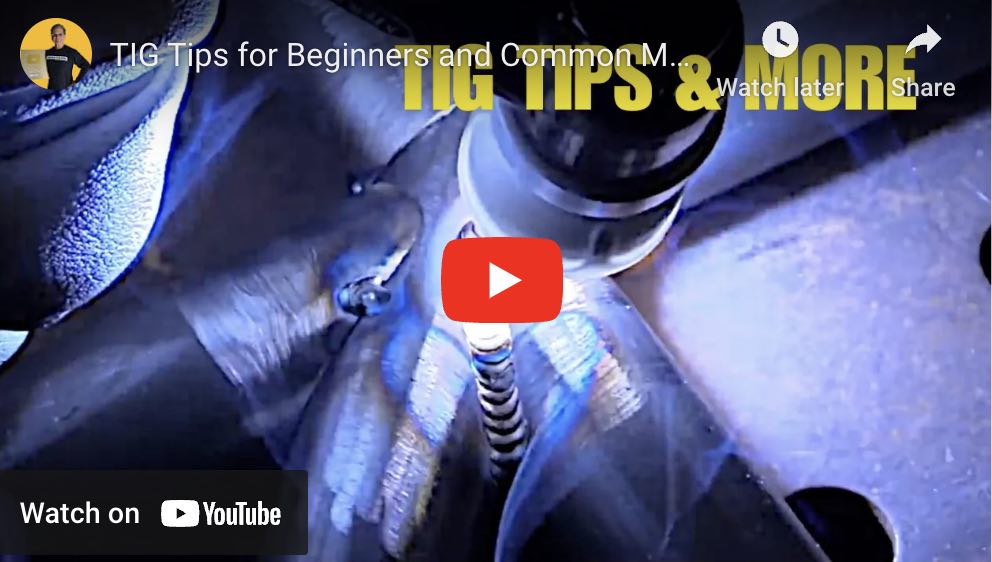TIG welding AC vs DC
- HOME
- TIG WELDING
- Tig Welding Ac Vs Dc
How to TIG Weld Aluminum and TIG Welding AC vs DC
This video boils it down for you. Understanding why we weld aluminum on AC is fundamental to understanding TIG settings like AC balance.
If you liked the video above on how to tig weld aluminum, you will love the content over at welderskills.com
Did you know?...
***you can have a Whole month of access to some of the best TIG welding videos for only one Dollar at welderskills.com
*** We Also have a New TIG course learning system over at welderskills.com designed to help you learn faster, with less frustration, and with less metal.
***And that you will get Free Access to this $36.99 TIG course... included as part of your membership?
***And that you can watch as much as you like during your free week trial?
***Its Easy to sign up
Even easier to cancel ...no hoops to jump thru.
No Ads, No BS style
Invest in yourself and sign up for the free test drive today.
TIG Welding AC vs DC Current
Tungsten Inert Gas (TIG) welding, also known as Gas Tungsten Arc Welding (GTAW), is a highly precise welding method widely used across industries like aerospace, automotive, and fabrication. TIG welding offers excellent control over the welding process, allowing welders to work on a wide variety of materials.
In this article, we will explore the advantages of using AC and DC current in TIG welding and how they are applied in different welding tasks.
Understanding AC and DC Current in TIG Welding
Before diving into the advantages of each current type, it's essential to understand the basics of AC and DC current in TIG welding.
- DC (Direct Current): In DC welding, the current flows in one direction, either from the electrode to the workpiece (DC Electrode Negative or DCEN) or from the workpiece to the electrode (DC Electrode Positive or DCEP). DC is widely used for welding steels, stainless steel, copper, and other metals where strong, clean welds are essential.
- AC (Alternating Current): In AC welding, the current alternates between positive and negative cycles.
With traditional transformer design tig welding machines this usually happens at 60 cycles per second (60 Hz). This alternating flow of current makes AC particularly suited for materials like aluminum and magnesium, which require both cleaning and penetration during welding.
With never inverter tig welders, there is usually a setting that allows for higher AC frequencies.
Both AC and DC offer distinct advantages that cater to different types of welding projects, and choosing the right current is important for ensuring weld quality, performance, and efficiency.
Advantages of TIG Welding Using AC Current
1. TIG Welding Aluminum and Magnesium...and even pot metal
One of the primary advantages of AC current in TIG welding is its suitability for welding materials like aluminum and magnesium. Aluminum is challenging to weld because it forms a layer of aluminum oxide on its surface, which has a much higher melting point than the base metal itself. The alternating nature of AC current is uniquely suited to this challenge.
- Cleaning Action: During the positive half of the AC cycle, electrons flow from the workpiece to the tungsten electrode. This part of the cycle removes the aluminum oxide layer from the surface of the metal, allowing for better penetration of the weld.
- Penetration: The negative half of the AC cycle pushes electrons from the tungsten electrode to the workpiece, providing deep penetration into the base metal. This balanced cycle of cleaning and penetration makes AC the best choice for welding aluminum, as it ensures a clean, high-quality weld.
Advantages of TIG Welding Using DC Current
1. Best for Welding carbon steel, stainless steel, nickel alloys, titanium, cobalt alloys, and copper.
DC current is the preferred choice for welding ferrous metals, such as steel, stainless steel, and copper. The continuous, directional flow of current in DCEN mode (Electrode Negative) allows for deep penetration into the base metal, which is essential for creating strong, durable welds in these materials.
- Deep Penetration: DCEN provides deeper penetration compared to AC, making it ideal for welding thicker materials like steel, where strength and durability are critical.
2. Better Control and Precision
DC welding offers welders more control and precision, particularly in DCEN mode. The steady, direct flow of current makes it easier to maintain a stable arc and achieve consistent welds, which is essential in precision welding tasks.
- Ideal for Thin Stainless Steel: DCEN provides greater control over heat input, making it easier to avoid overheating and warping thin materials like stainless steel. Welders can create precise, fine welds without the risk of burn-through.
- Minimized Arc Wander: DC current reduces the risk of arc wandering, which can occur when welding in AC mode. This makes DC ideal for welding projects that require pinpoint accuracy, such as working on intricate welds or small parts.
Choosing Between AC and DC in TIG Welding
The choice between AC and DC in TIG welding ultimately depends on the materials being welded and the desired outcome of the weld.
- Use AC for Aluminum and Magnesium: The cleaning action and balanced heat distribution of AC current make it the go-to choice for welding aluminum and magnesium.
- Use DC for Steel, Stainless Steel, and Copper: The deep penetration and precise control offered by DC current make it the best choice almost any metal other than aluminum and magnesium...of course there are always a few exceptions.














